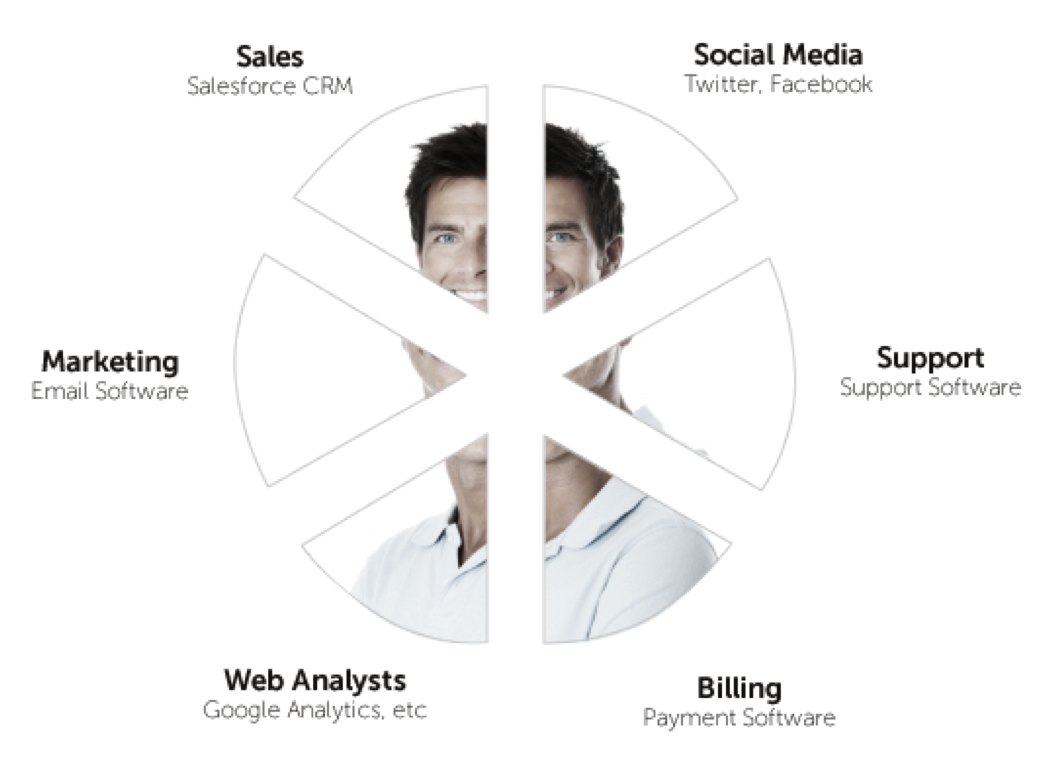How to Fix a Fragmented Customer Experience
Posted: September 12, 2011
Communications used to be just marketing's job. Today, customers interact with your company through a number of different channels and departments. So how do you make sure prospects have a consistent experience from the moment they first look at your website to the day they become a customer and eventually (hopefully) a brand advocate?
Communications used to be just marketing's job. Today, customers interact with your company through a number of different channels and departments. So how do you make sure prospects have a consistent experience from the moment they first look at your website to the day they become a customer and eventually (hopefully) a brand advocate?

Technology like CRM systems, marketing automation software, and segmentation tools have all helped to advance the way we connect the dots for customers. Before any individual piece of software can help you, however, you have to start with an internal strategy.
Here's an idea: Start by pulling together representatives from various parts of your company for a regular (monthly/quarterly) discussion, involve pizza (a certified strategy tool), and encourage each participant to present on their portion of the customer narrative.
Marketing
Whether they found you through a Google search or read about you on a third-party review site, customer expectations are set from the first moment they discover your company. Marketers who focus on customer acquisitions have the best vantage point into that initial spark or expectation. Have your marketers come ready to address the following:
- What content do website visitors tend to consume most?
- What content results in the greatest number of qualified leads?
- What is the typical path to conversion?
- What are people searching to find us?
(Note for HubSpot customers: You can find all of this in your marketing and advanced marketing analytics tools.)
Sales
Conversations matter. And when it comes to the early stages of the customer relationship, no one gets more insight into what is really motivating individual leads than your sales team. Ask Sales to come ready with stories about their conversations with leads and any trends they're seeing.
- Of the customers who ended up converting, what types of challenges did they reveal in conversation?
- How do they expect our product/service to address those challenges?
- Who else is part of their decision-making process?
- Of the leads who did not end up converting, what was missing?
Support/Customer Relations
It is important that what you communicate to prospects aligns with the actual experiences of customers. What aspects of your product/service are customers using and benefiting from the most? Does that align with your marketing messages? Have you followed through on your promises? Have your customer support team come prepared to discuss:
- What emails have generated the most activity?
- What topics are hot in the customer forums?
- What challenges do customers call-in about?
- How happy are customers?
- Does their experience with your company match their expectation?
- What good use cases or stories have emerged that could be useful for prospects to hear? Would any customers be willing to provide testimonials, reviews, or help to prospects?
Much of creating an integrated customer experience comes down to getting all of the departments and parts of your company on the same page. Without strategy and structured internal communication, marketing automation systems and other tools can easily fall short.
 Biz Tip Source: Hubspot Blog
Biz Tip Source: Hubspot Blog